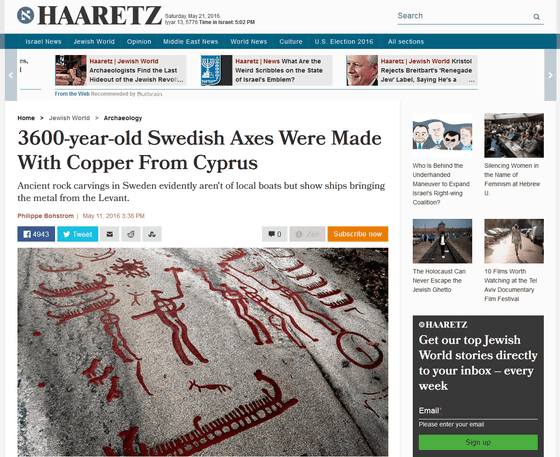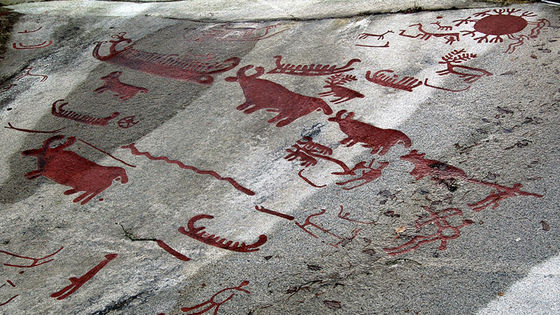I discovered that Swedish ono 3600 years ago is made of copper from Cyprus, one of the evidence that trading was done long ago
Analysis of the ono excavated 3600 years ago in Sweden revealed that Cypriot copper far removed from Sweden was used as a raw material for Ono. Along with this discovery, it is clear that the Swedish ancient mural painting is a picture of a trade ship that carries copper from the Mediterranean to the Scandinavian Peninsula, not the one depicting the small boat used locally .
3600-Year-old Swedish Axes Were Made With Copper From Cyprus - Archaeology - Haaretz - Israel News Haaretz.com
http://www.haaretz.com/jewish/archaeology/1.719125

Copper tools in the Bronze Age, discovered in Europe,IsotopeAnalysis has revealed that most are made of copper from Sicily, Sardinia, Iberia, Cyprus Island. During the bronze age, the mined copper was shaped like a flat plate, and the four corners were deformed during transportation and it looked like a tanned cow skin. The copper bare metal (ingot) which is shown in the following photograph is found on Crete Island, and it is said that the weight per piece is 37 kg.

An enormous amount has been found on Cypriot, Sardinia, Greece, and Crete, similar to copper ingots on Crete. Furthermore, it was discovered on the coast of Turkey in the late 14th centurySinking boat UrbunA large amount of copper was found also from the underwater survey, it turned out that Urubun was transporting about 10 tons of copper originating in Cyprus.
The replica of the sunken ship Urbun is the following.

In SwedenUniversity of GoshenbergDr. Johan Ling, who is studying archeology at Archeology, has subjected to isotopic analysis of the bronze age ono and daggerrons discovered in Sweden and the Cypriot copper far from Sweden is included in the dagger It was discovered.
Also, in Sweden, a large amount of wall sculpture with a picture of the ship was found and it was presumed that it was a painting of a boat which was used in the past so far. However, as a result of this discovery, the picture of the ship depicts a trade ship and is seen as evidence that trade was done in ancient Scandinavia and the Mediterranean.
The following mural paintings were found in the Bohusleren region in the southern part of Sweden, around 1600 BC to 1400 BC. Cows and boats are drawn.

Similarly in Norrkoping in the southern part of Sweden, wall sculptures have been found to have drawn trade vessels.

In the wall sculpture of Bohuslen, sculptures that have been found to have drawn copper ingots have also been found (bottom of image). Copper was very valuable at that time in Scandinavia, whileMycenae civilizationAnd prehistoric Middle Eastern area, archaeologists speculate that amber from Scandinavian had been barter from the copper of the Mediterranean because amber was as important as gold. Dr. Ling says, "Copper in the island of Cyprus was not exported to Europe too much, and it seems that a small amount of copper was brought to Scandinavia via the trade route at the time."

Related Posts:
in Note, Posted by darkhorse_log








